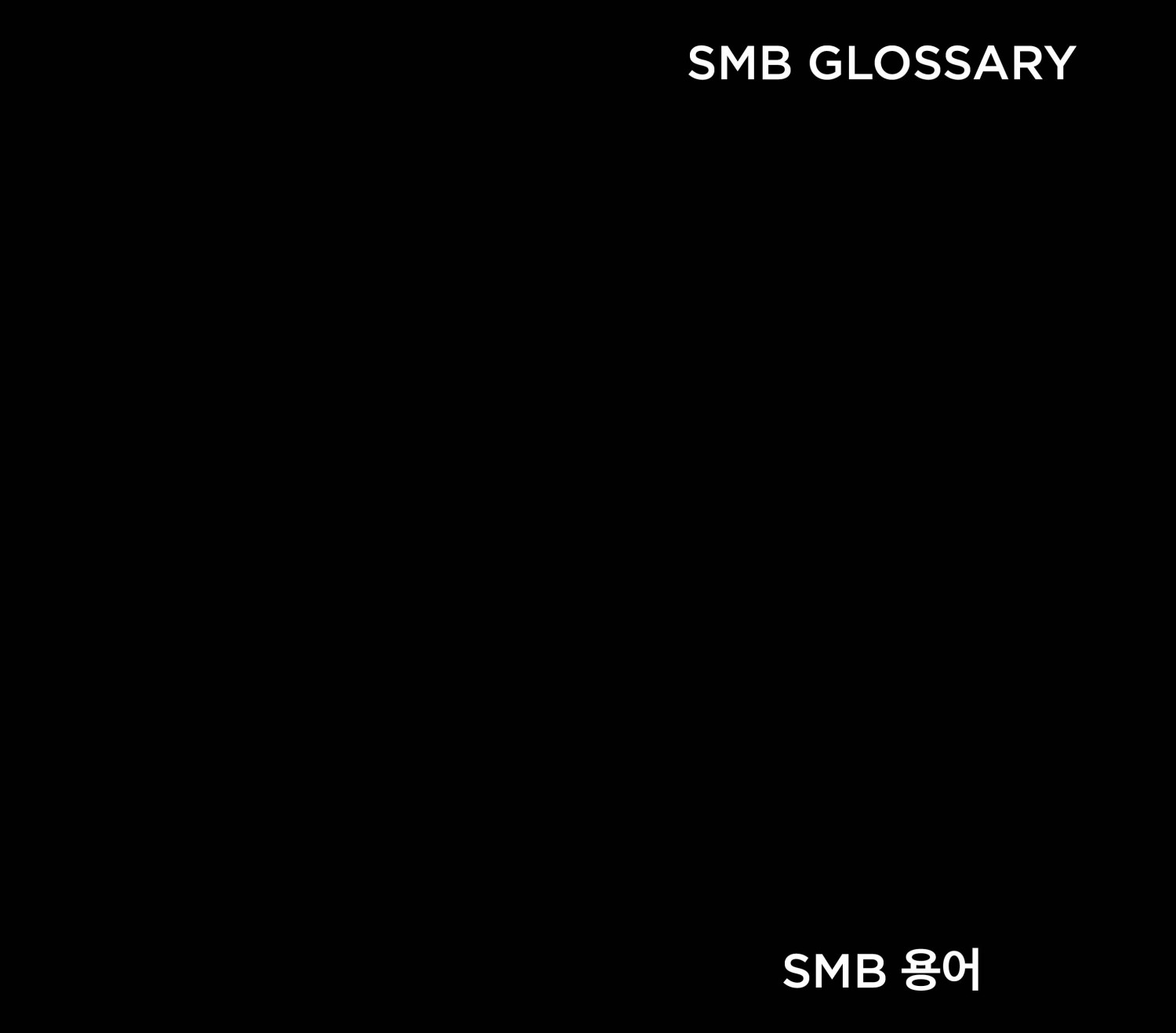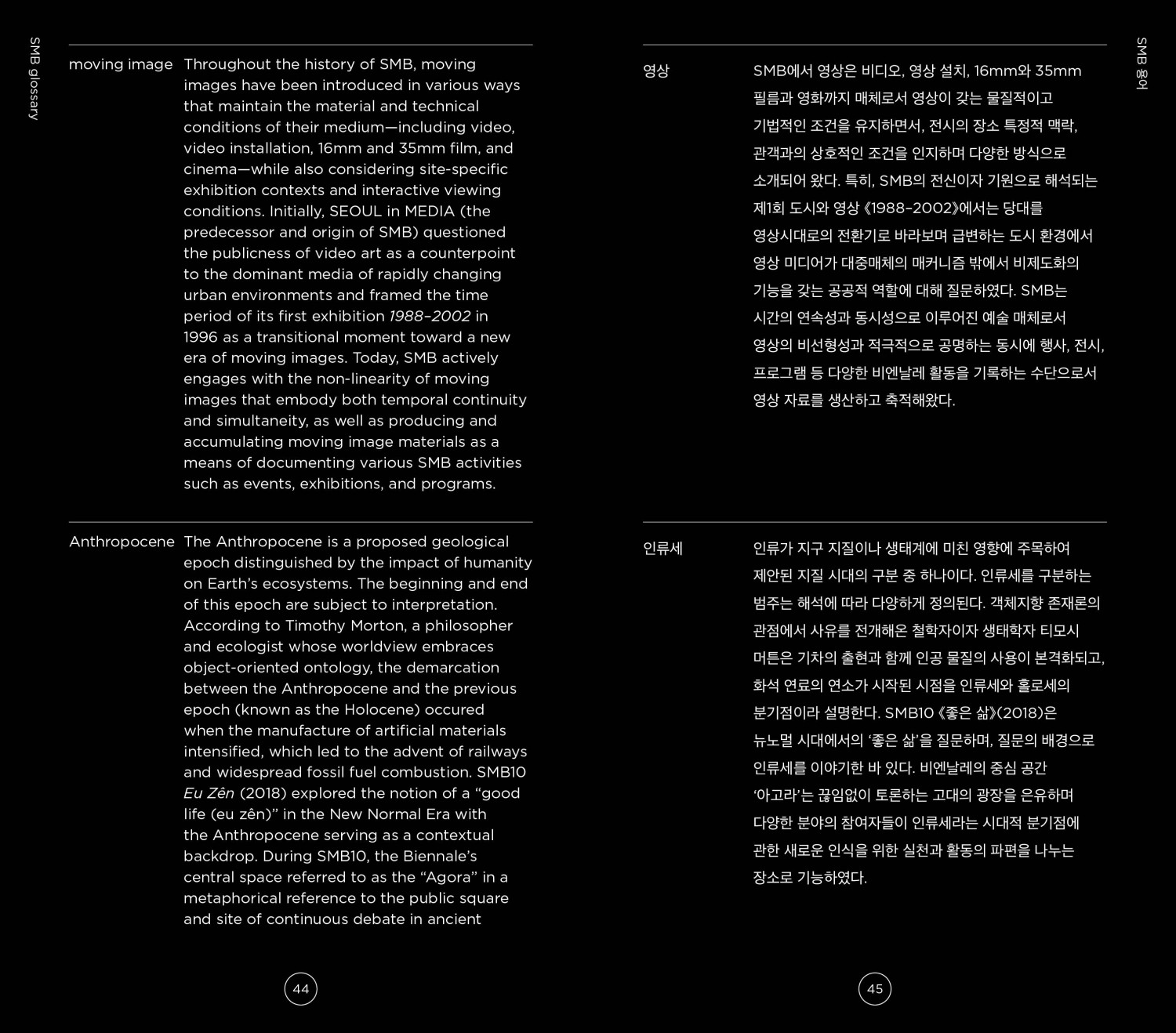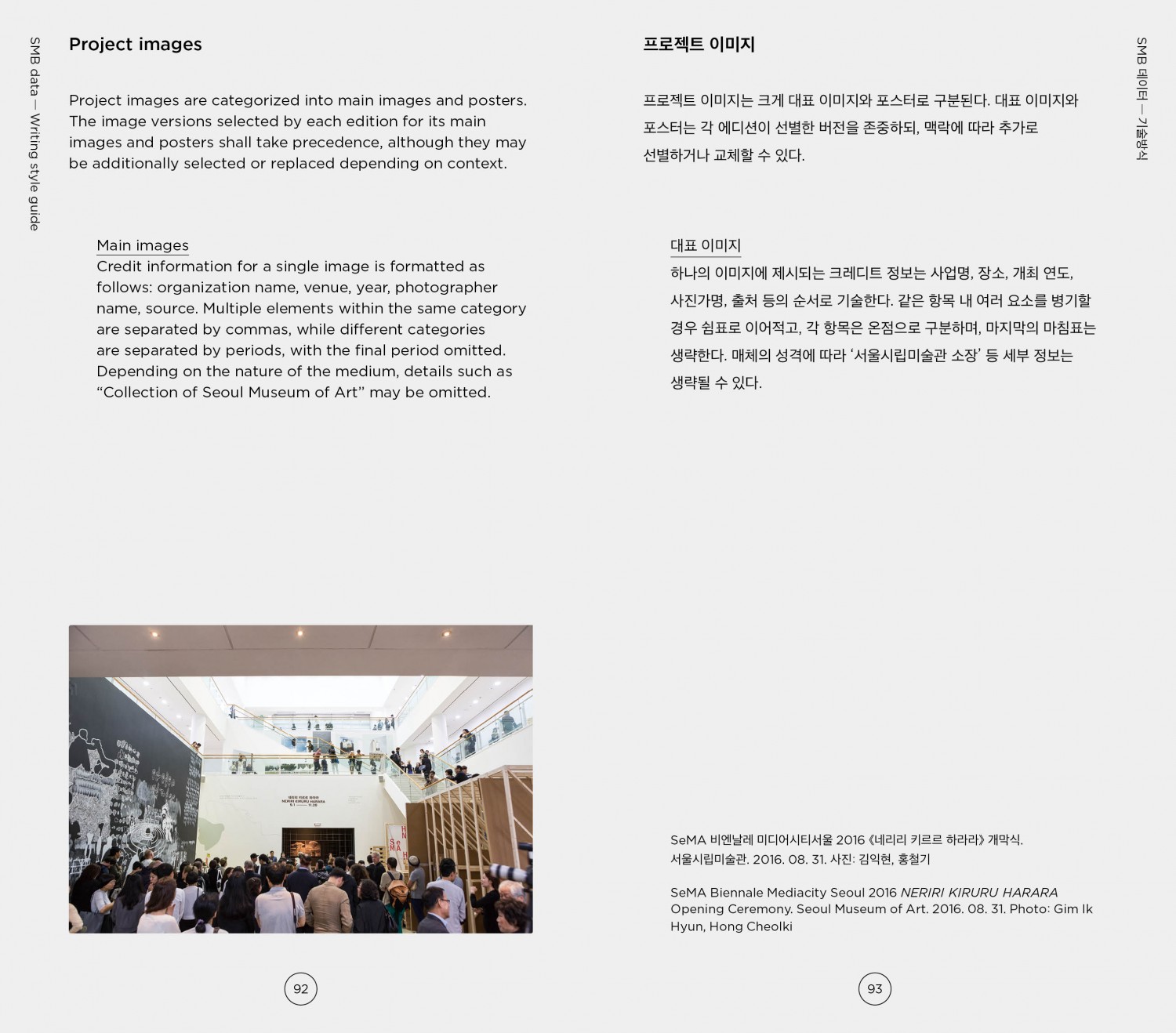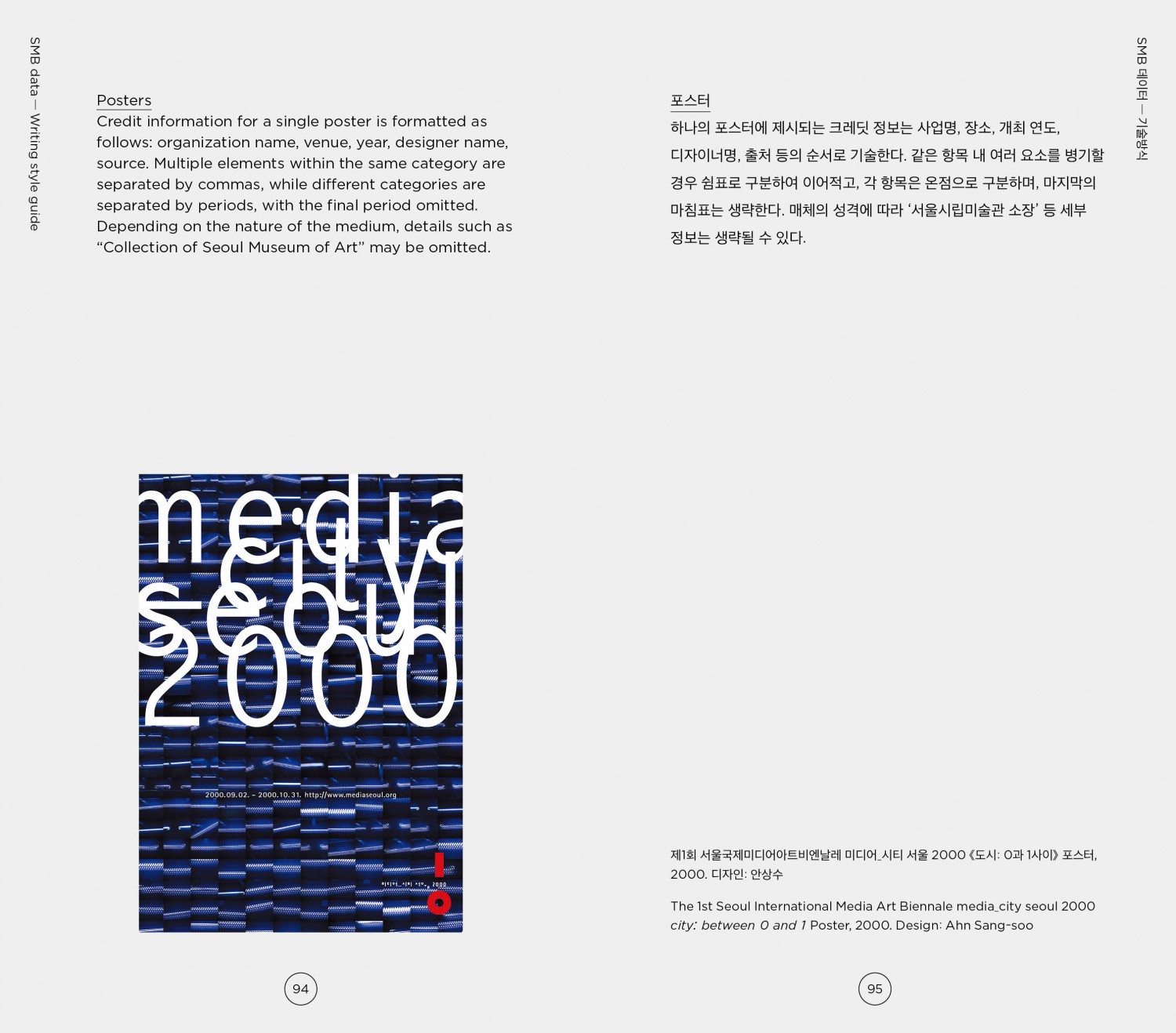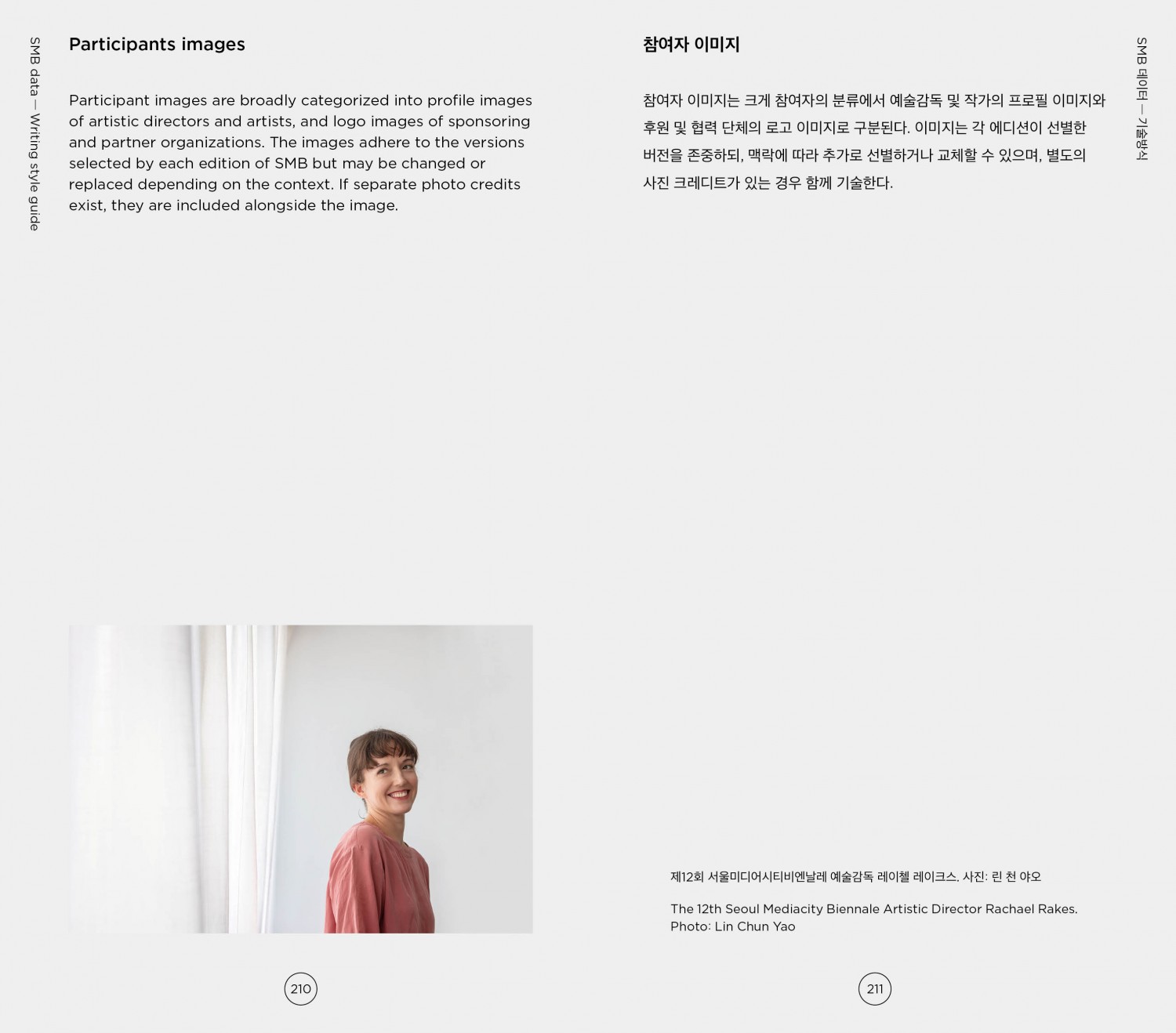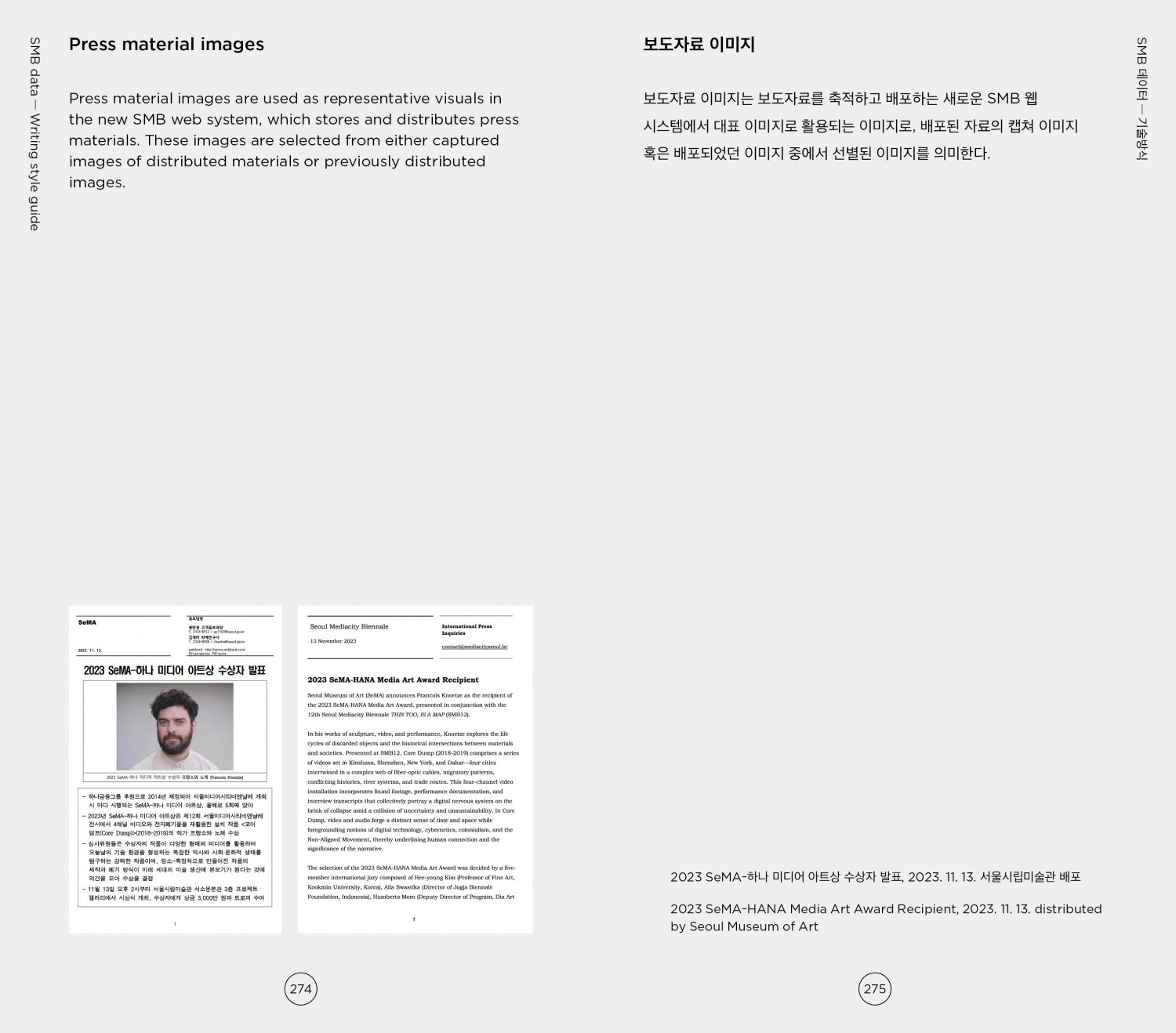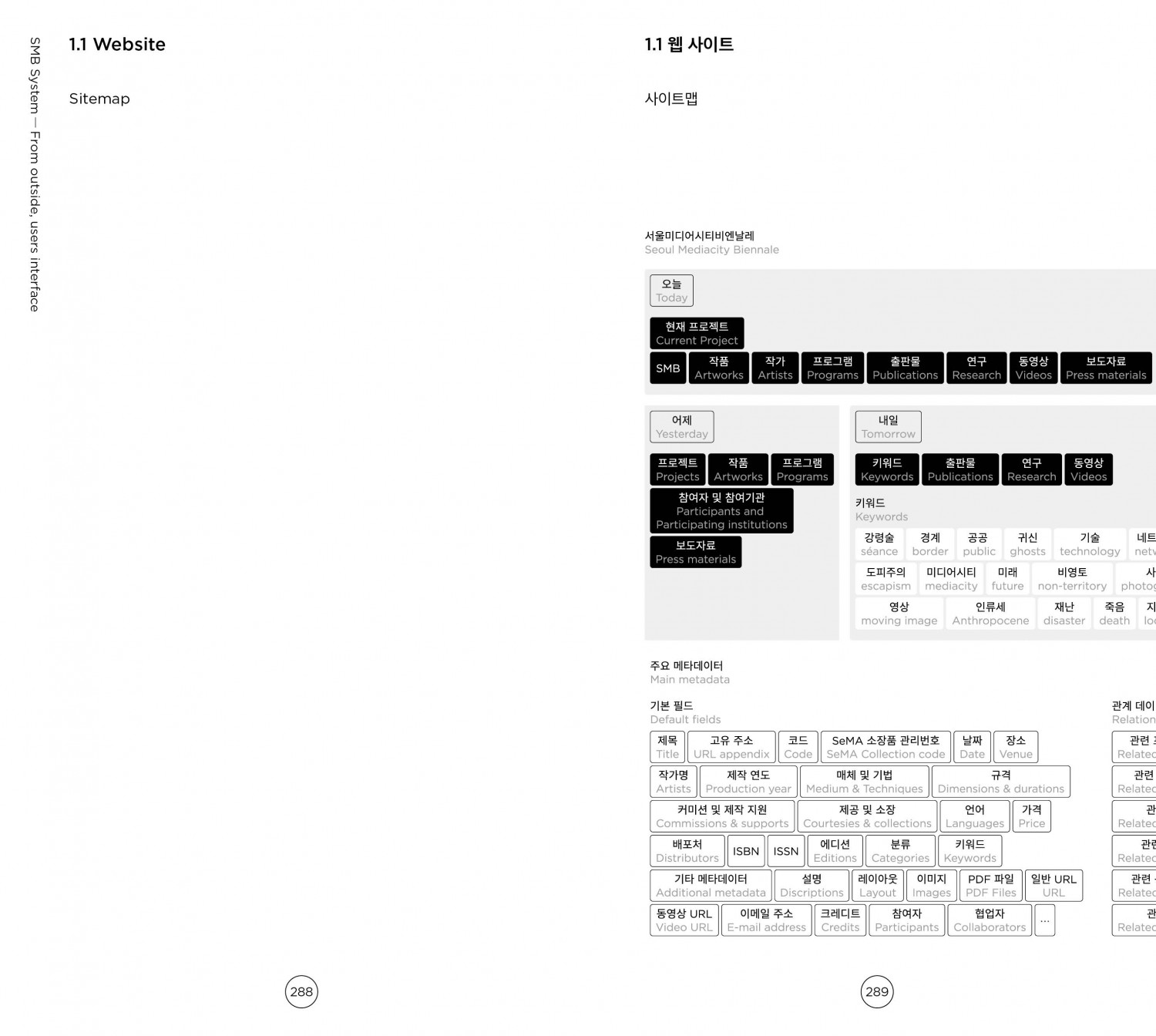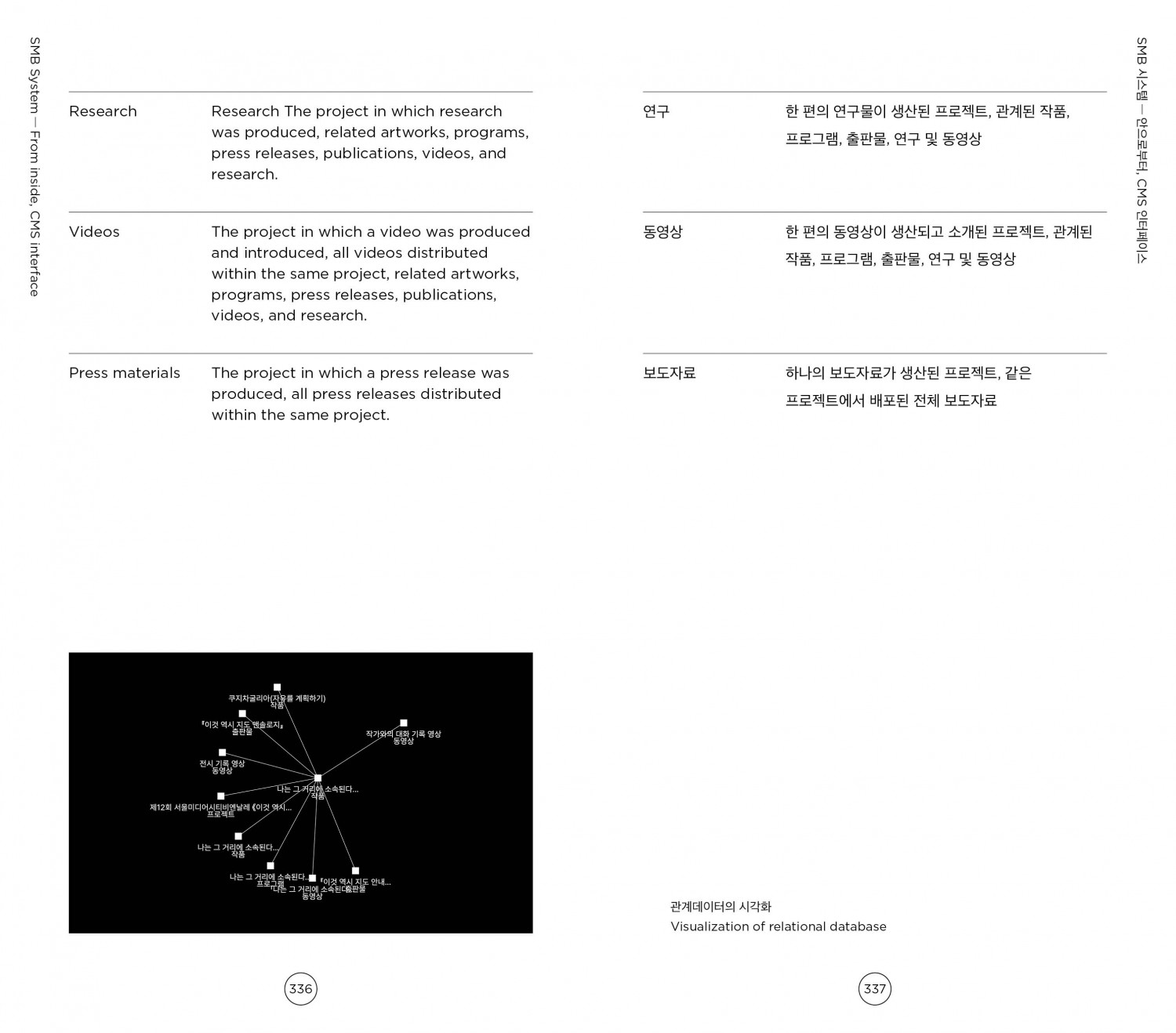The Seoul Museum of Art (SeMA) has published The New Seoul Mediacity Biennale Web System Guide in conjunction with the launch of a new digital web platform (mediacityseoul.kr) that allows public access to the accumulated knowledge and archives of the Seoul Mediacity Biennale (SMB). This system organizes and structures the artistic practices and archival materials of SMB, which has been held since 1996, transforming nearly three decades of biennale history into a shared digital resource. It is the outcome of a sustained inquiry into how such knowledge—embodied in contemporary art practices—can be documented, managed, and made accessible in digital form.
As a contemporary art biennale reflecting Seoul’s urban transformations and evolving media environments, the Seoul Mediacity Biennale has accumulated a wide range of archival resources over the past decades. However, much of this information had been managed in fragmented and dispersed ways, leading to repeated inefficiencies and limitations in utilization. Recognizing this, SeMA first compiled a comprehensive record in the Seoul Mediacity Biennale 1996–2022 Report (2022) and, in 2024, examined the necessity and potential of digital transformation through Open Research for the Development of a Web Platform.
The new web system is composed of eight content categories—Projects, Artworks, Programs, Participants and Institutions, Publications, Research, Videos, and Press Releases—each systematically organized according to clear standards for terminology, description, and image composition. Based on the three core principles of Precision, Conciseness, and Logic, the system establishes a consistent documentation grammar for SMB. All data are stored via a Content Management System (CMS) on an external cloud server, integrated with the website to ensure open accessibility for all users.
This newly published guide serves both as a practical manual for operating the web system and as a documentation model for contemporary art institutions. SeMA hopes that it will serve as a valuable reference for other cultural organizations seeking to build web-based archival systems in the future.
